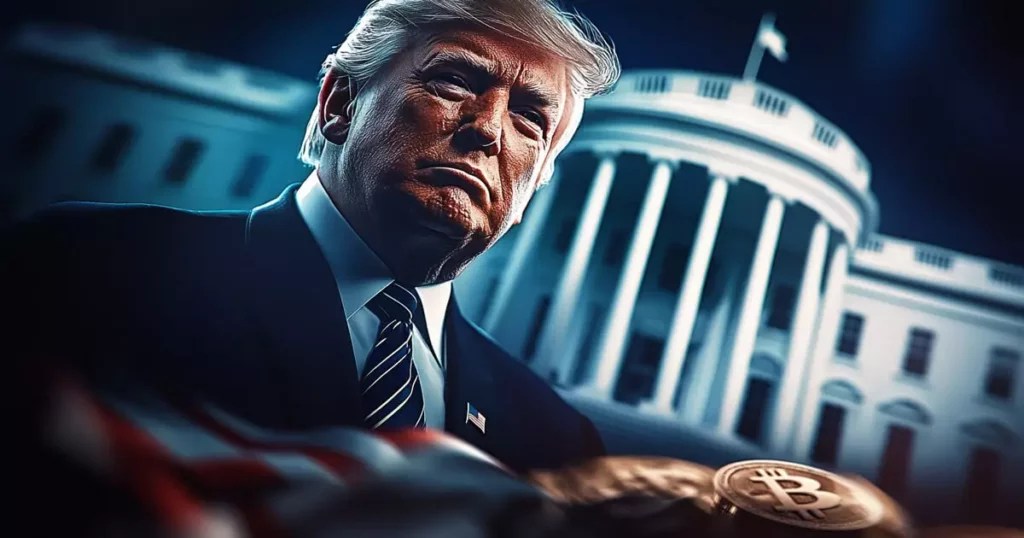The recent political developments in the United States have sparked renewed discussions regarding the future of cryptocurrency regulation and market dynamics. With the presidential election outcomes hinting at a shift in regulatory attitudes, many industry experts believe that we may be on the cusp of a transformative period for cryptocurrencies. This article dissects the implications of these changes, scrutinizing both opportunities and cautionary elements presented to investors.
In a notable memo dated November 6, Matthew Hougan, the Chief Investment Officer of Bitwise, expressed an optimistic outlook for the cryptocurrency landscape following Donald Trump’s electoral win. Hougan argued that Trump’s administration could ignite what he termed a “Golden Age of Crypto.” This perspective emerged as market sentiment shifted dramatically during Trump’s ascent in the electoral race, catapulting Bitcoin to impressive new heights, with its value surging to approximately $75,650—an all-time high.
Cryptocurrency investors rejoiced, witnessing a 7.69% increase in Bitcoin’s price over a single day, according to data from CryptoSlate. However, the excitement was tempered by a significant warning articulated by Hougan regarding the uneven performance of various cryptocurrencies. He urged investors to adopt a discerning approach and carefully assess their investment landscapes to navigate the impending changes effectively.
Central to Hougan’s optimistic forecast is the anticipated transformation in the regulatory stance towards cryptocurrencies. Historically, the U.S. Securities and Exchange Commission (SEC) has enforced strict guidelines, oftentimes through litigation that left many crypto endeavors struggling to comply. This “regulation by enforcement” approach has stifled the sector’s growth, breeding frustration among participants and regulators alike. Notably, SEC Commissioner Hester Peirce has criticized the agency’s harsh approach, underscoring its detrimental effects on innovation.
With a new administration, however, Hougan suggests that the environment might shift markedly. He highlighted Trump’s favorable rhetoric towards cryptocurrencies during his campaign, which hints at a potential reform in regulatory strategies that could liberate the market from its previous constraints. The prospect of new leadership at the SEC suggests a move away from punitive measures toward a framework that encourages growth and innovation.
A significant aspect of Hougan’s analysis leans on the potential influx of institutional investment into the cryptocurrency sector, fueled by a more accommodating regulatory landscape. With over $23 billion already funneled into Bitcoin exchange-traded funds (ETFs), the appetite for cryptocurrencies among institutional investors is on the rise. This trend is bolstered by macroeconomic factors, including the looming specter of rising national debt and potential interest rate cuts, which might enhance Bitcoin’s attractiveness as a hedge against inflation.
Moreover, the much-anticipated Bitcoin halving scheduled for April 2024 is thought to play a pivotal role in elevating interest from institutions seeking new investment avenues. Coupled with flourishing use cases for cryptocurrencies—like stablecoins and prediction markets—these factors present a robust foundation for significant growth in the decentralized finance space.
Despite the glowing optimism, Hougan cautions against indiscriminate investment across the cryptocurrency spectrum. He emphasizes that the anticipated regulatory reset may level the playing field, allowing projects to rise or fall based on their own merits. This maturation of the sector requires investors to employ a meticulous, disciplined approach to evaluate and select potential investments wisely.
Indeed, while a favorable regulatory environment can be a catalyst for positive market dynamics, it does not guarantee the triumph of all cryptocurrencies. Many less viable projects may struggle to find their footing, which highlights the need for investors to distinguish between promising endeavors and those likely to underperform.
The current landscape presents a compelling case for optimism among early adopters and crypto enthusiasts. While the shift towards a more accommodating regulatory framework heralds a new era for the cryptocurrency markets, it also presents challenges that demand a shift in investor mindset. Careful assessment and strategic planning will be vital as the industry evolves. In this moment of opportunity, the insights from experts like Hougan serve as a reminder to remain vigilant and informed, ensuring that investments are both thoughtful and rooted in solid fundamentals as we venture into this promising but unpredictable terrain.

















Leave a Reply